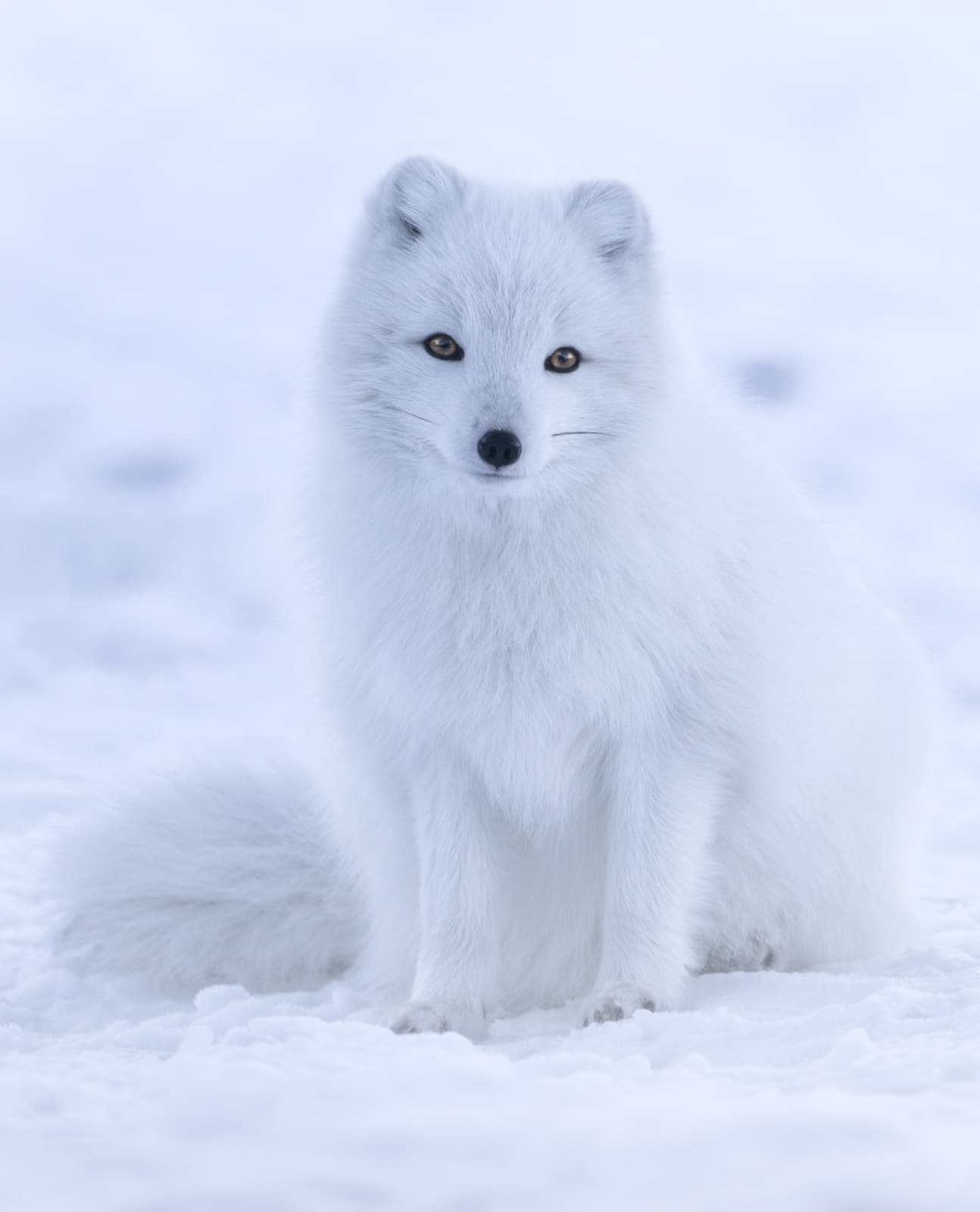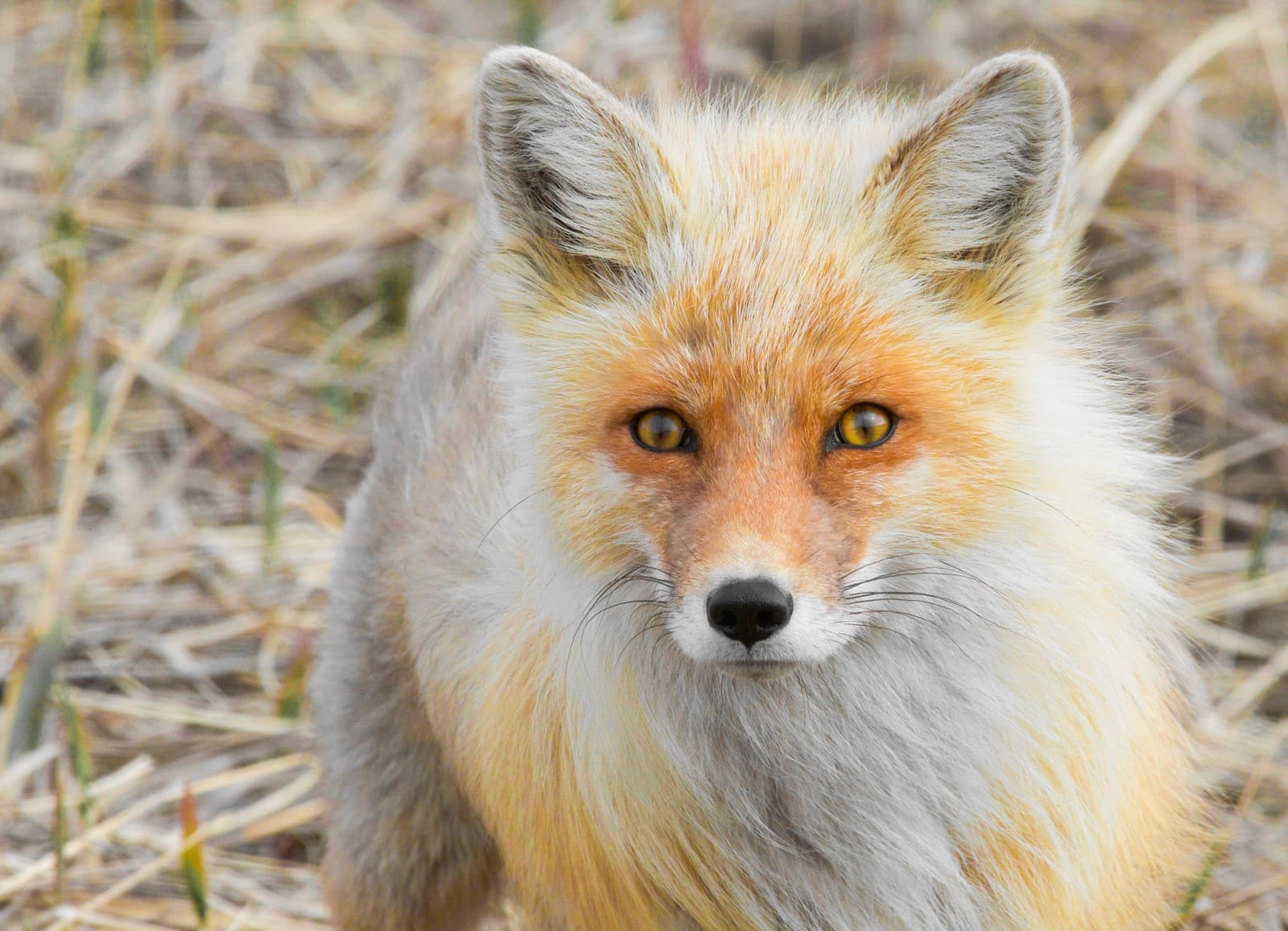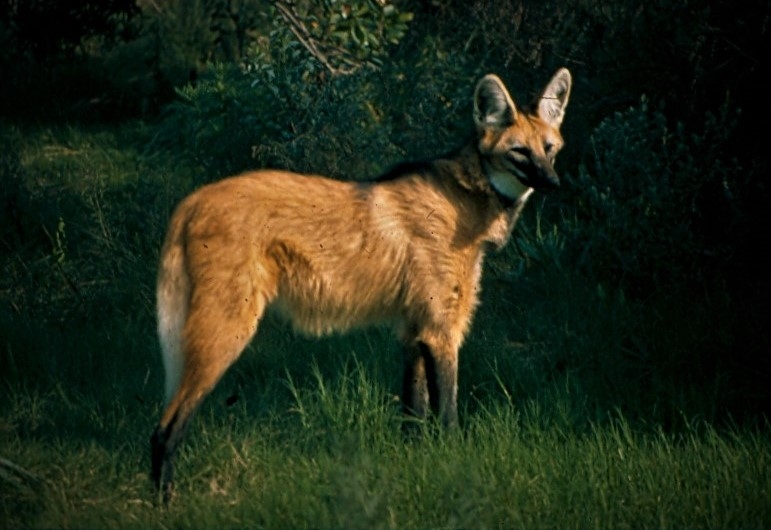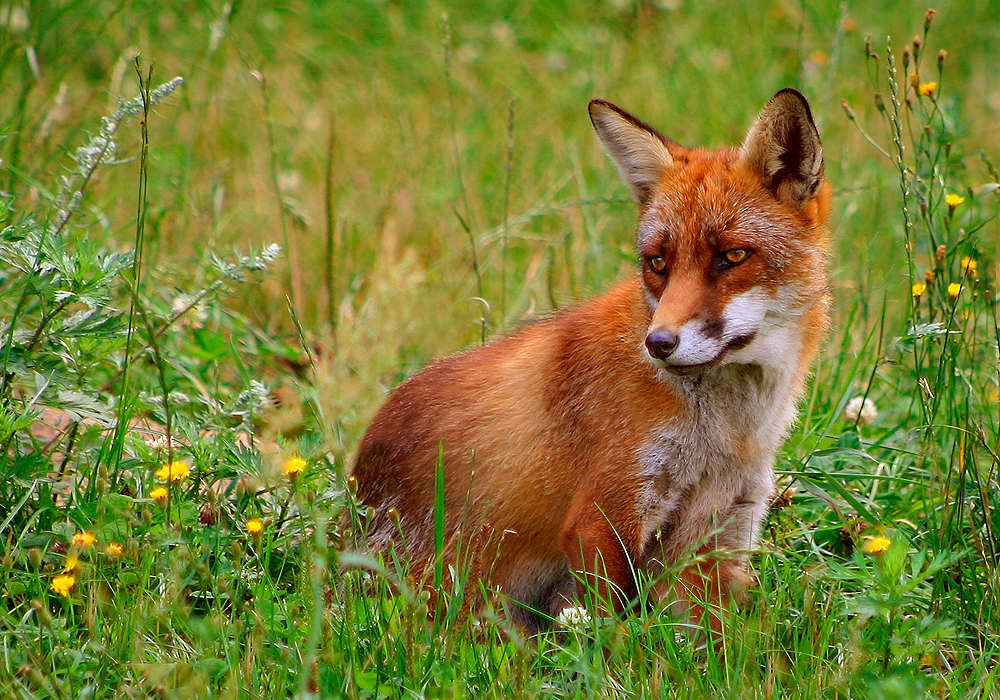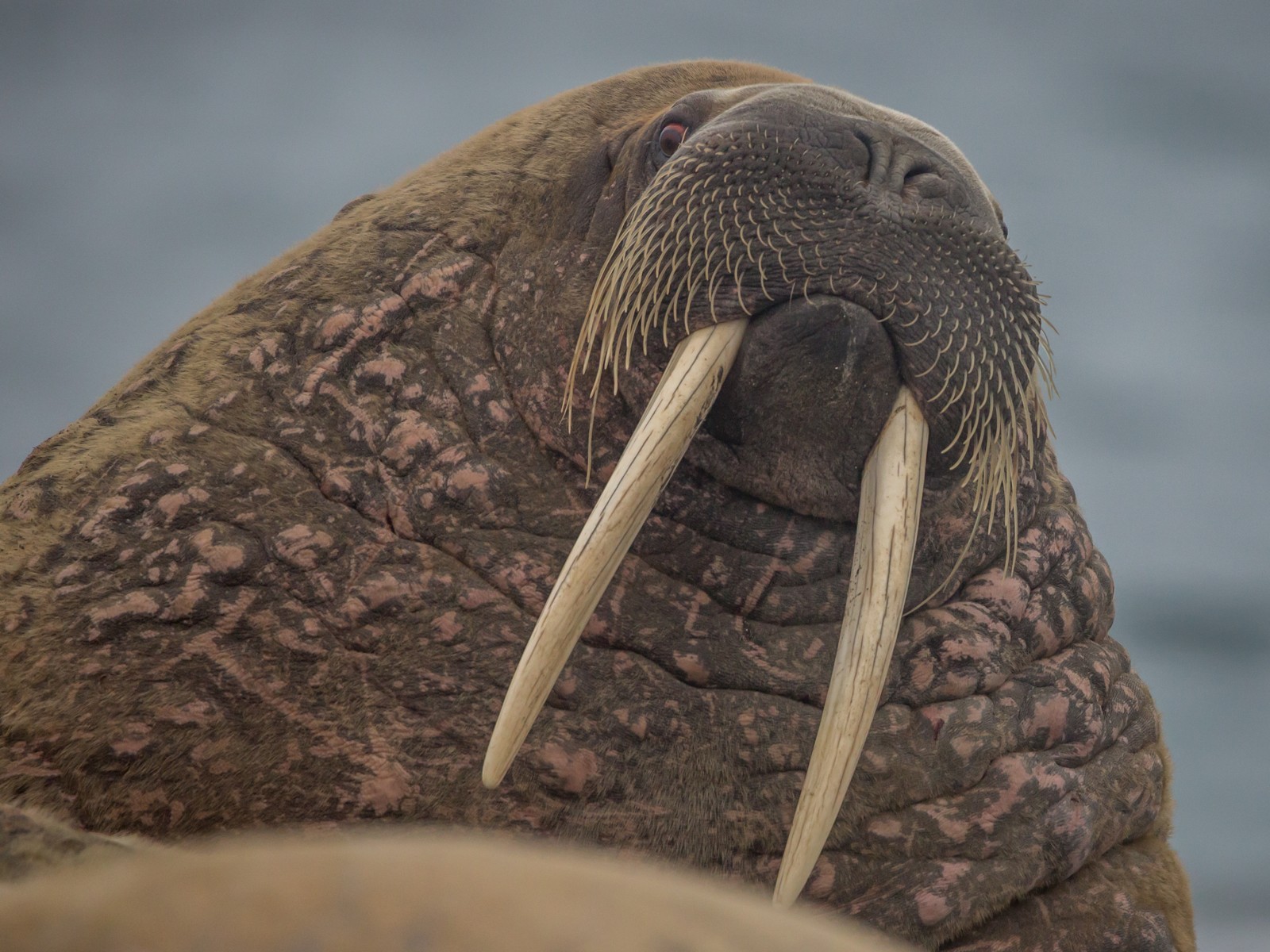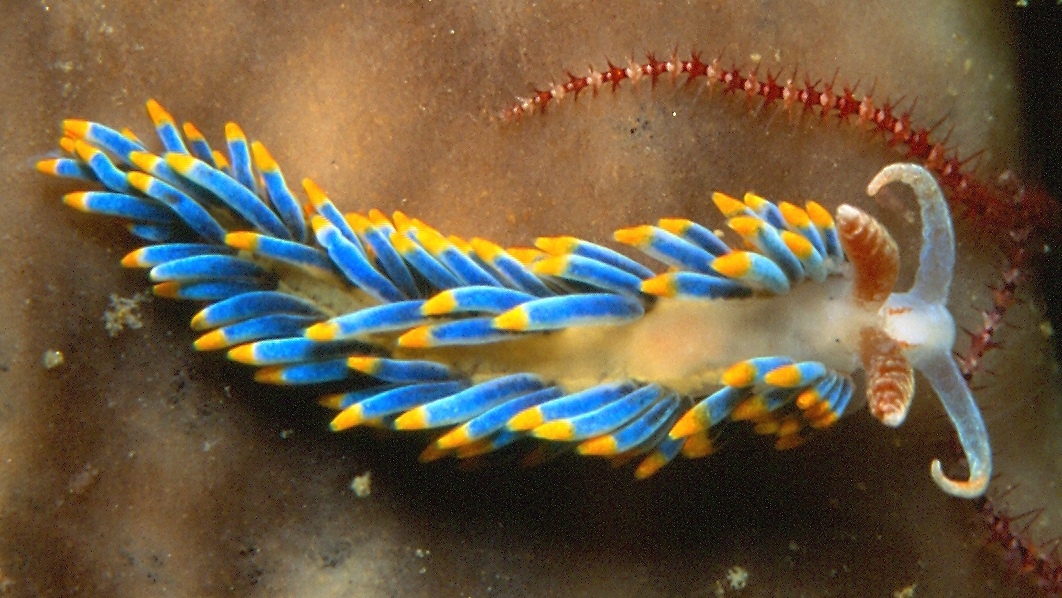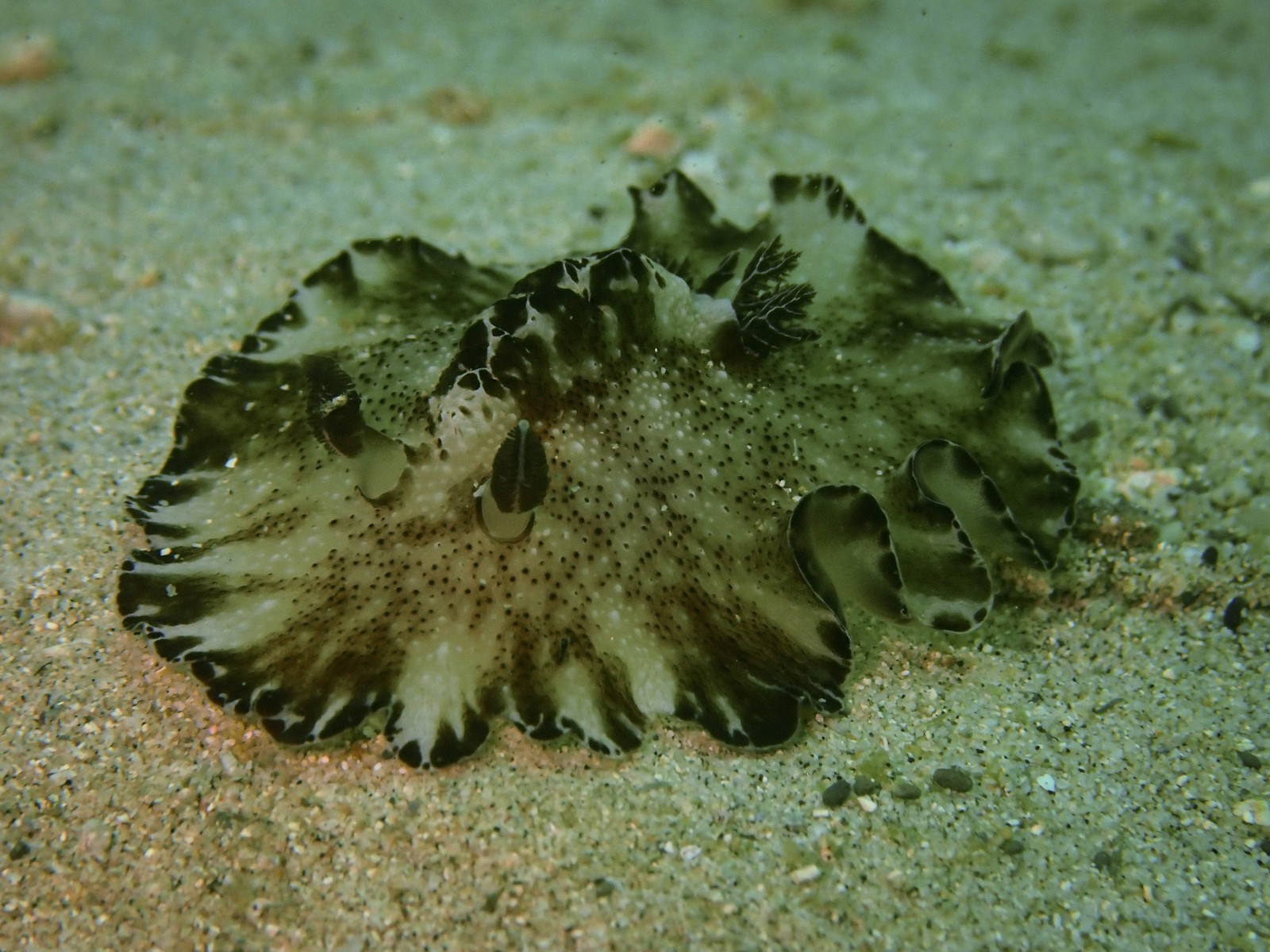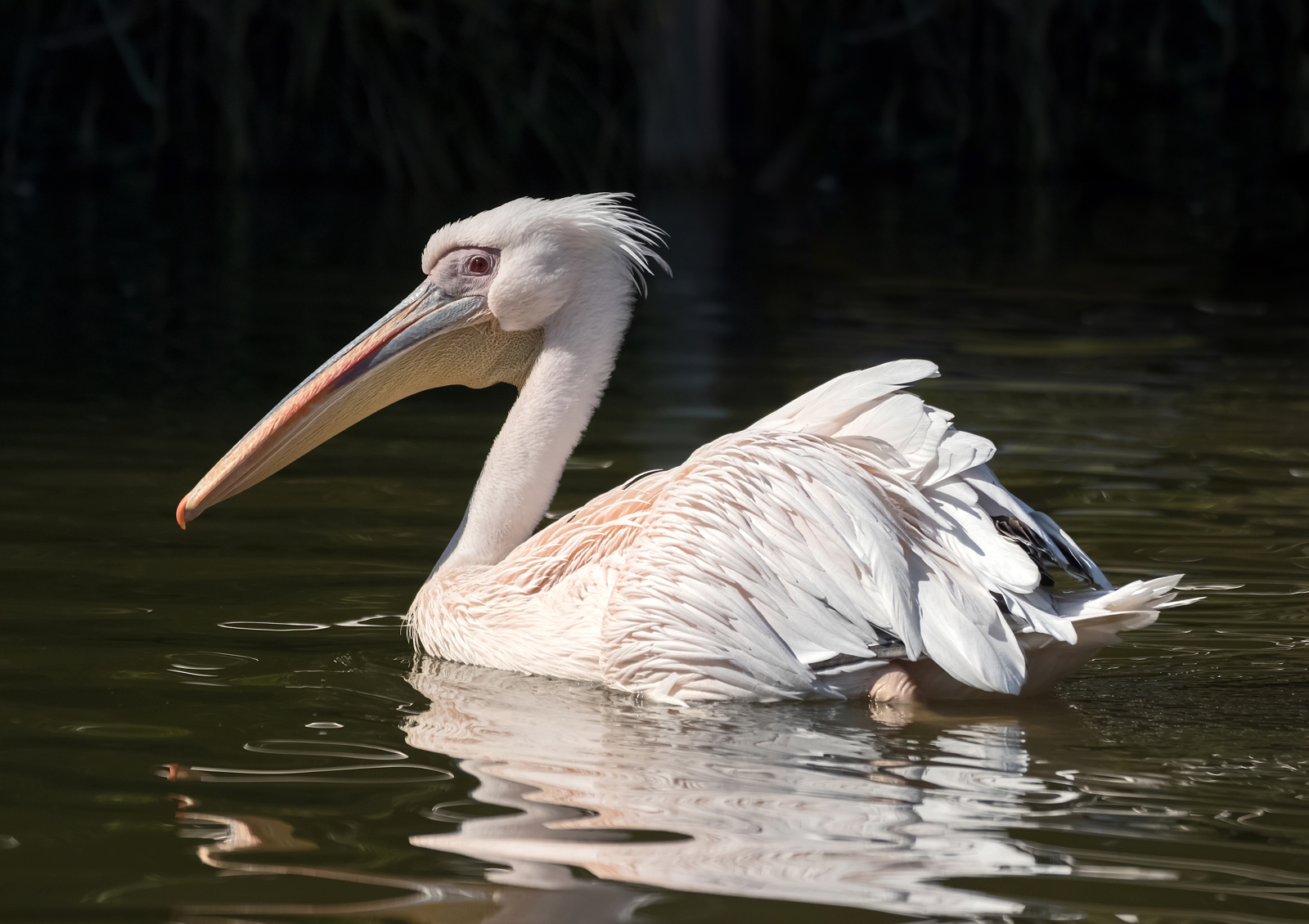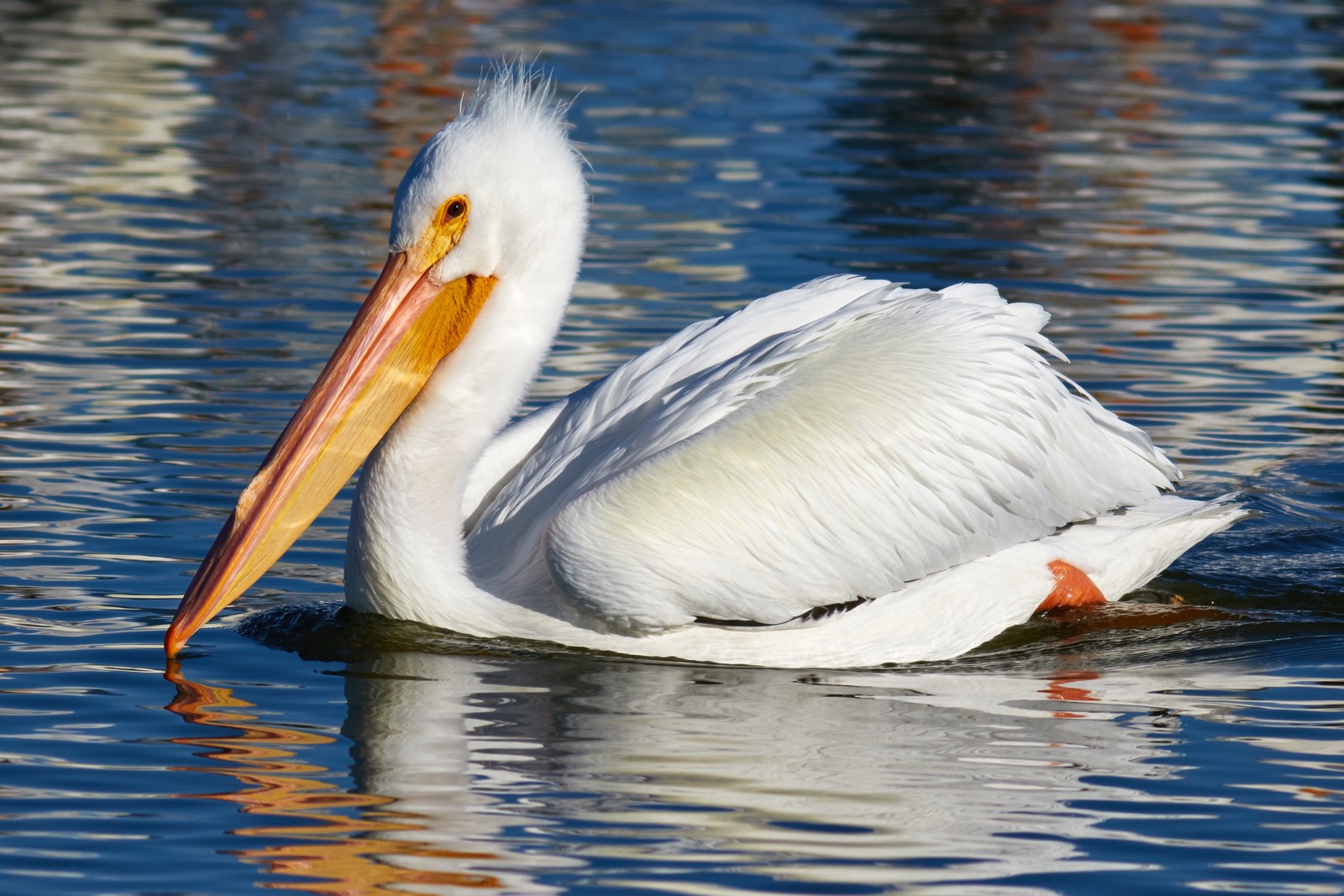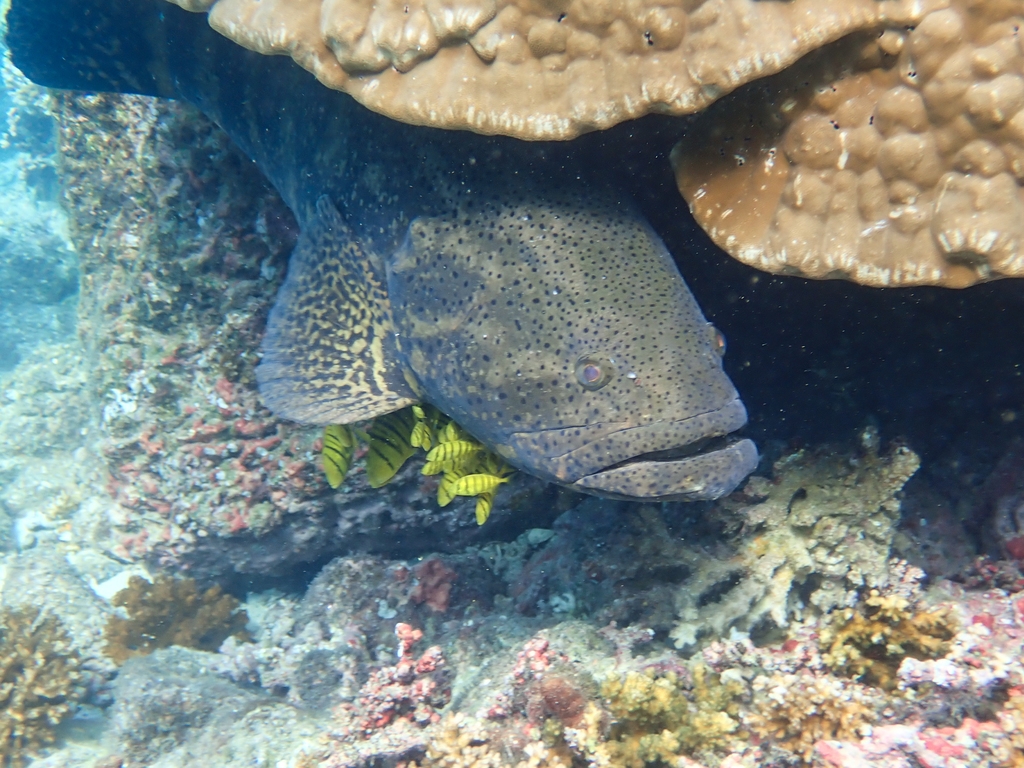Red Fox vs Gray Fox: A Complete Comparison
When comparing Red Fox vs Gray Fox species, several distinct characteristics set these remarkable canids apart. The Red Fox (Vulpes vulpes) typically weighs 8-15 pounds (3.6-6.8 kg) and features its iconic russet-orange coat, while the Gray Fox (Urocyon cinereoargenteus) weighs 7-13 pounds (3.2-5.9 kg) and displays a unique salt-and-pepper gray coloration with distinctive reddish-brown legs and flanks.
Perhaps the most fascinating difference between these fox species lies in their adaptations: Gray Foxes possess the remarkable ability to climb trees, making them North America’s only canid capable of true arboreal behavior. Red Foxes, while excellent jumpers, remain primarily terrestrial hunters with superior running speeds reaching up to 30 mph (48 km/h).
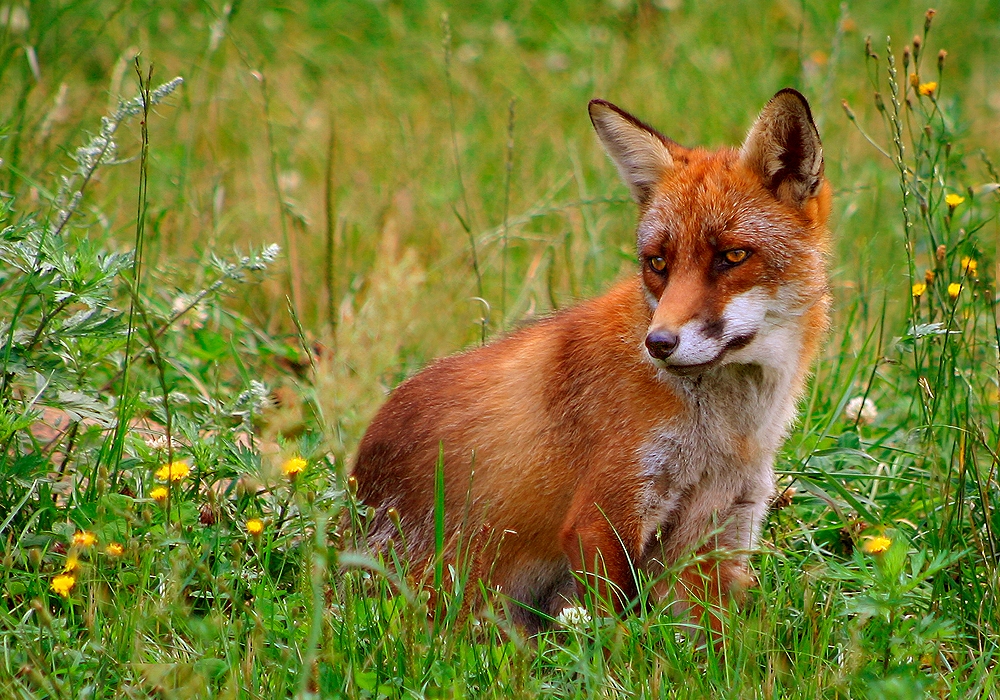
© Malene Thyssen / CC BY 2.5
The Red Fox showcases its characteristic russet coat and black-stockinged legs, adaptations that have helped this species become one of the most widespread carnivores on Earth. Note the distinctive white-tipped tail, a feature that distinguishes it from its Gray Fox cousin.
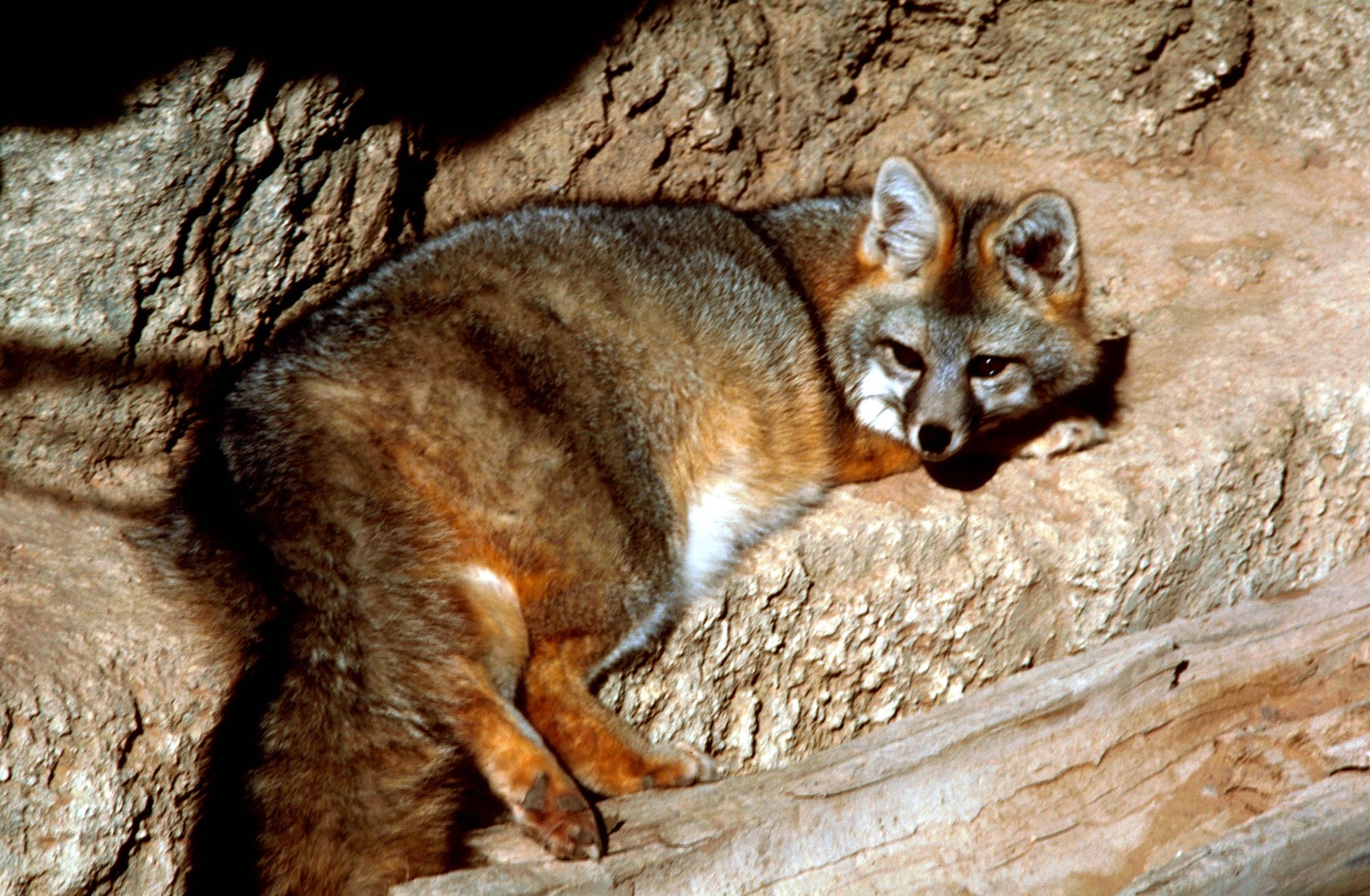
The Gray Fox exhibits its unique grizzled gray coat and reddish-brown markings, demonstrating the species’ distinctive coloration pattern. This image captures the fox’s characteristic dark-tipped tail and robust build, adaptations that serve it well in its woodland habitat.
Key Differences Between Red Fox and Gray Fox
| Feature | Red Fox | Gray Fox |
|---|---|---|
| Size | 8-15 lbs (3.6-6.8 kg) | 7-13 lbs (3.2-5.9 kg) |
| Coat Color | Russet-orange with white-tipped tail | Salt-and-pepper gray with reddish flanks |
| Climbing Ability | Limited to jumping | Can climb trees |
| Habitat | Open fields, urban areas, mixed woodland | Dense forests, rocky outcrops |
| Range | Worldwide distribution | Americas only |
| Diet | Highly omnivorous, opportunistic | More carnivorous, specialized |
Habitat and Distribution
Red Foxes demonstrate remarkable adaptability, thriving across diverse landscapes from Arctic tundra to urban environments. Their success stems from their opportunistic nature and ability to utilize human-modified landscapes. In contrast, Gray Foxes show a stronger preference for woodland habitats, particularly areas with dense understory vegetation and rocky outcrops.
Hunting and Dietary Differences
While both species qualify as opportunistic predators, their hunting strategies differ significantly. Red Foxes employ a distinctive pouncing technique, using their acute hearing to locate prey beneath snow or vegetation. Gray Foxes, leveraging their climbing abilities, can pursue prey in three dimensions, often hunting squirrels and birds in the canopy.
Behavioral Adaptations
Tree Climbing Abilities
Gray Foxes possess uniquely adapted curved claws and rotating forearms that enable them to ascend vertical tree trunks and navigate branches with remarkable agility. This adaptation provides several advantages:
- Escape from predators
- Access to arboreal prey
- Secure resting sites
- Alternative food sources like fruits and nuts
Red Foxes compensate for their terrestrial limitations with superior running speed and agility on the ground, regularly using their jumping ability to catch birds and small prey in mid-air.
Intelligence and Social Structure
Both species demonstrate high intelligence, but their social structures differ notably. Red Foxes often form small family groups with complex hierarchical relationships, particularly in resource-rich environments. Gray Foxes typically maintain more solitary lifestyles, coming together primarily during breeding season.
Conservation Status and Human Interaction
While both species face pressure from habitat loss, Red Foxes have proven more successful at adapting to human presence. Their ability to thrive in urban environments has led to stable populations worldwide. Gray Foxes, requiring more specific habitat conditions, face greater challenges from forest fragmentation and urbanization.
Who Would Win in a Confrontation?
While direct confrontations between Red and Gray Foxes rarely occur due to different habitat preferences, analysis of physical attributes suggests:
- Red Foxes hold a slight size advantage
- Gray Foxes possess superior climbing escape options
- Both species typically avoid conflict through territorial separation
- Neither species naturally dominates the other
The outcome of any theoretical encounter would likely depend more on individual circumstances and environment than species-specific advantages.
Disease Resistance and Adaptability
Recent research reveals interesting differences in disease resistance between the species. Red Foxes show greater resistance to mange and certain viral infections, while Gray Foxes demonstrate stronger natural immunity to rabies. These distinctions reflect their evolutionary adaptations to different environmental pressures and pathogen exposure.
Understanding these differences between Red Fox vs Gray Fox species helps wildlife managers and conservationists develop more effective species-specific conservation strategies while providing fascinating insights into the diverse adaptations of these remarkable canids.
